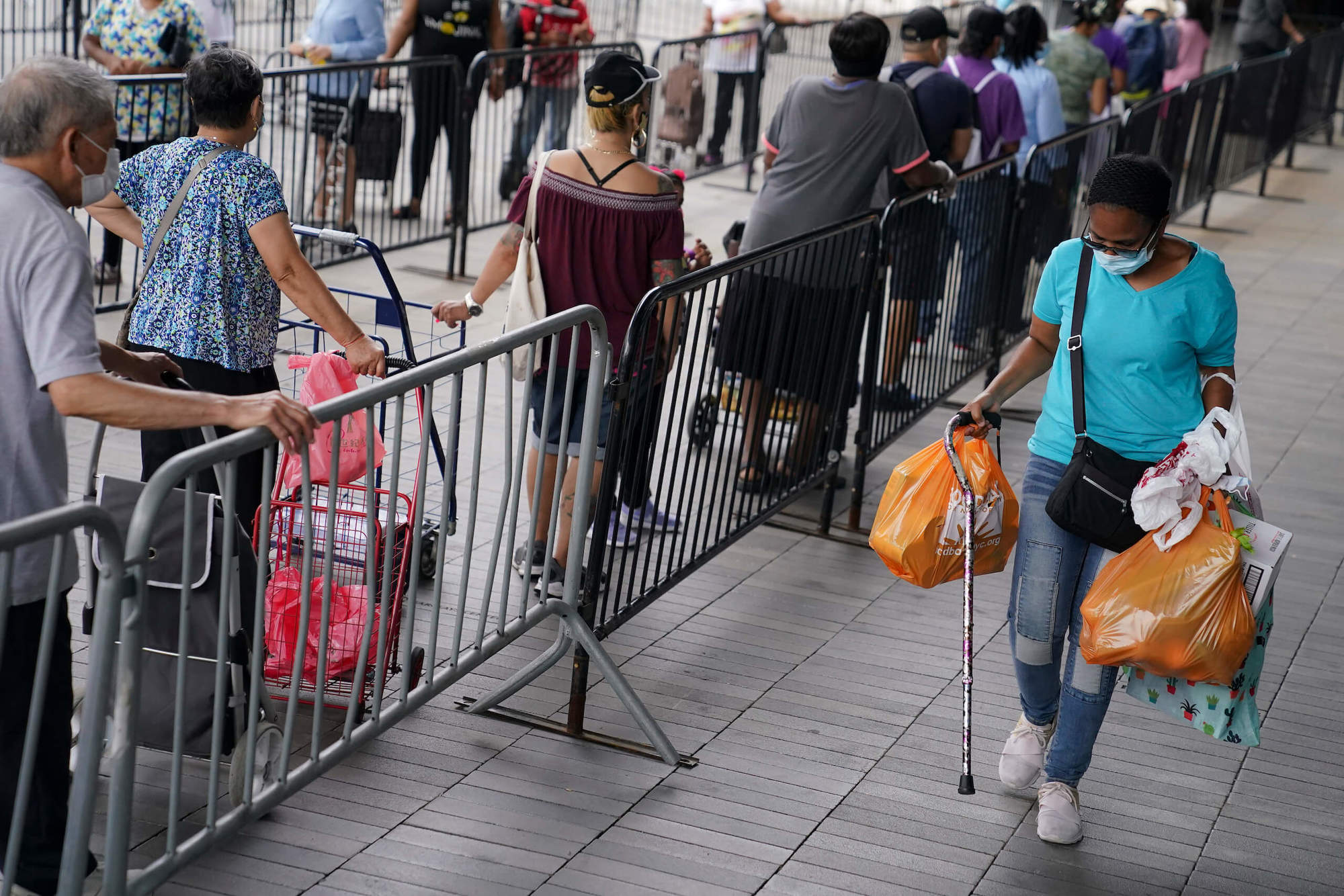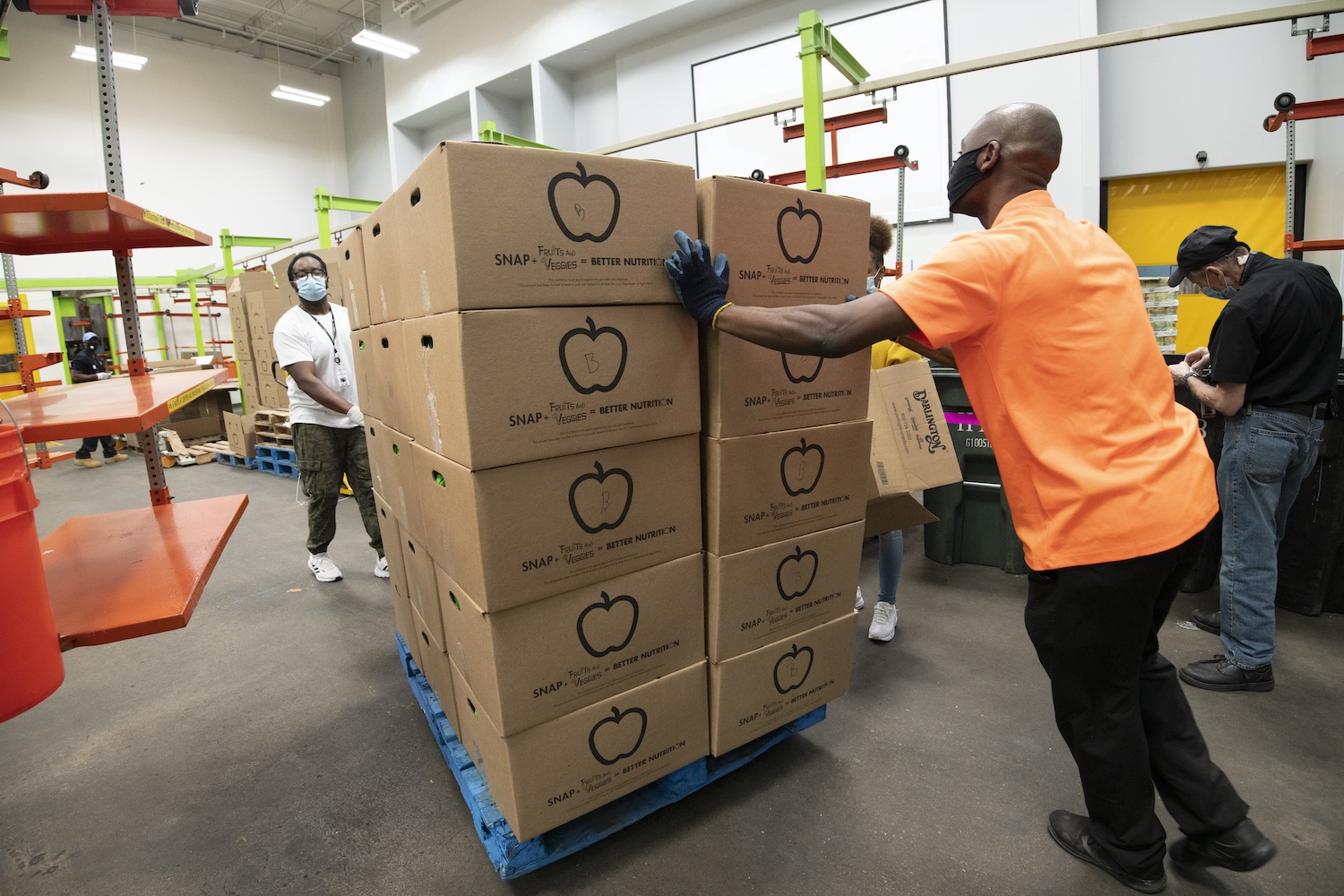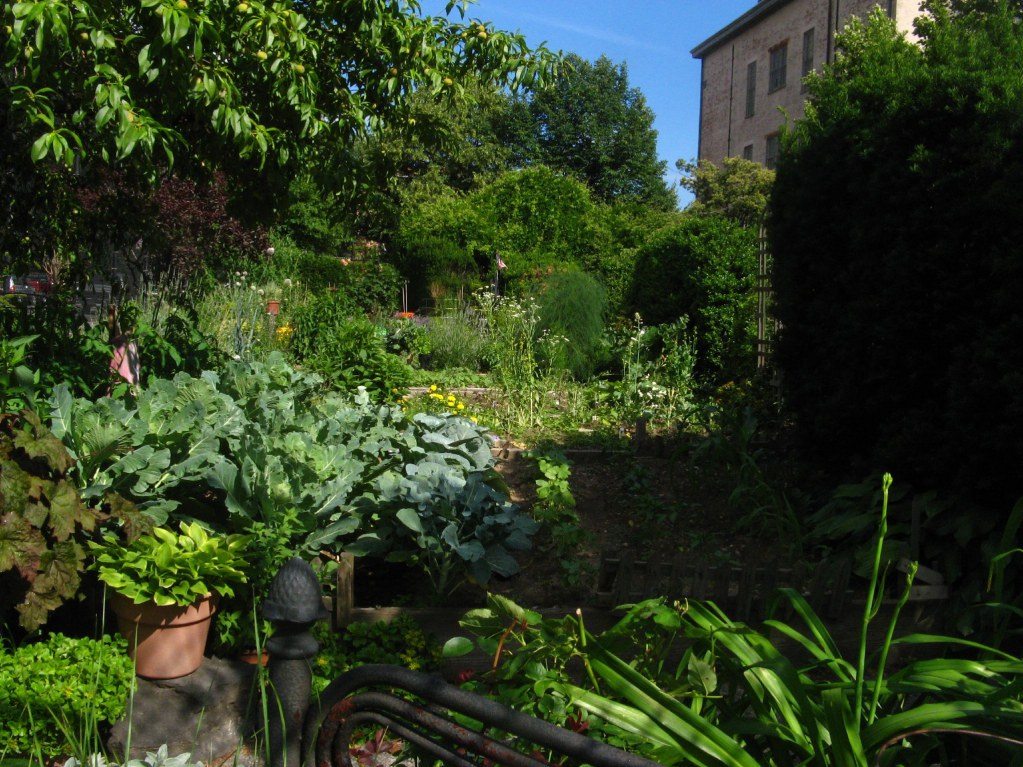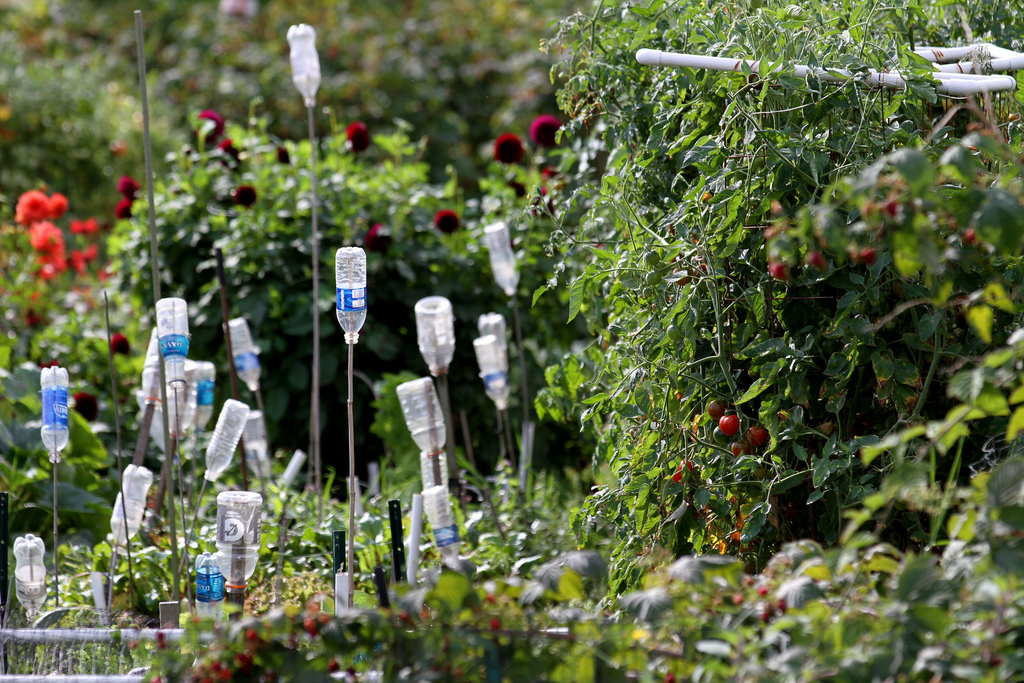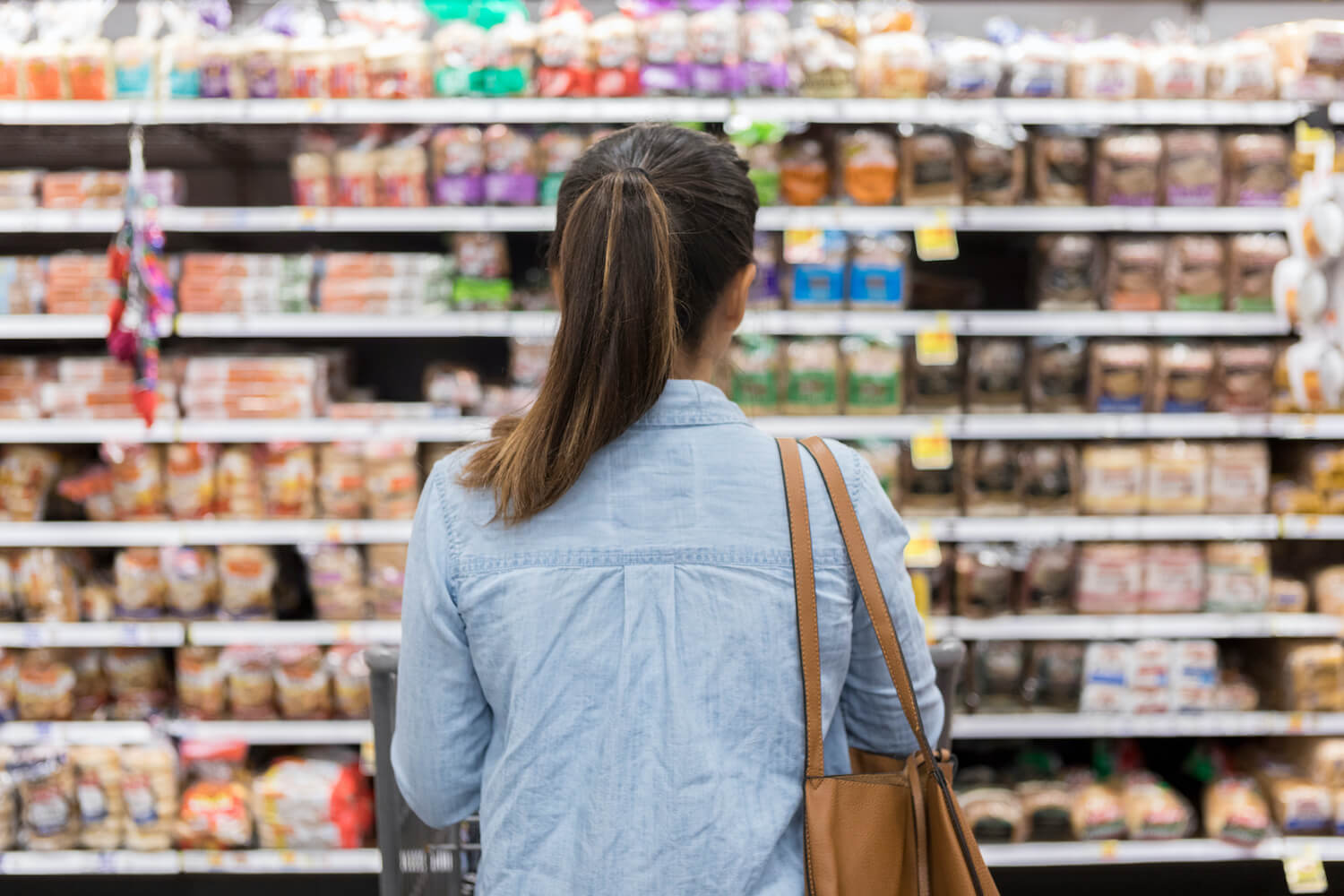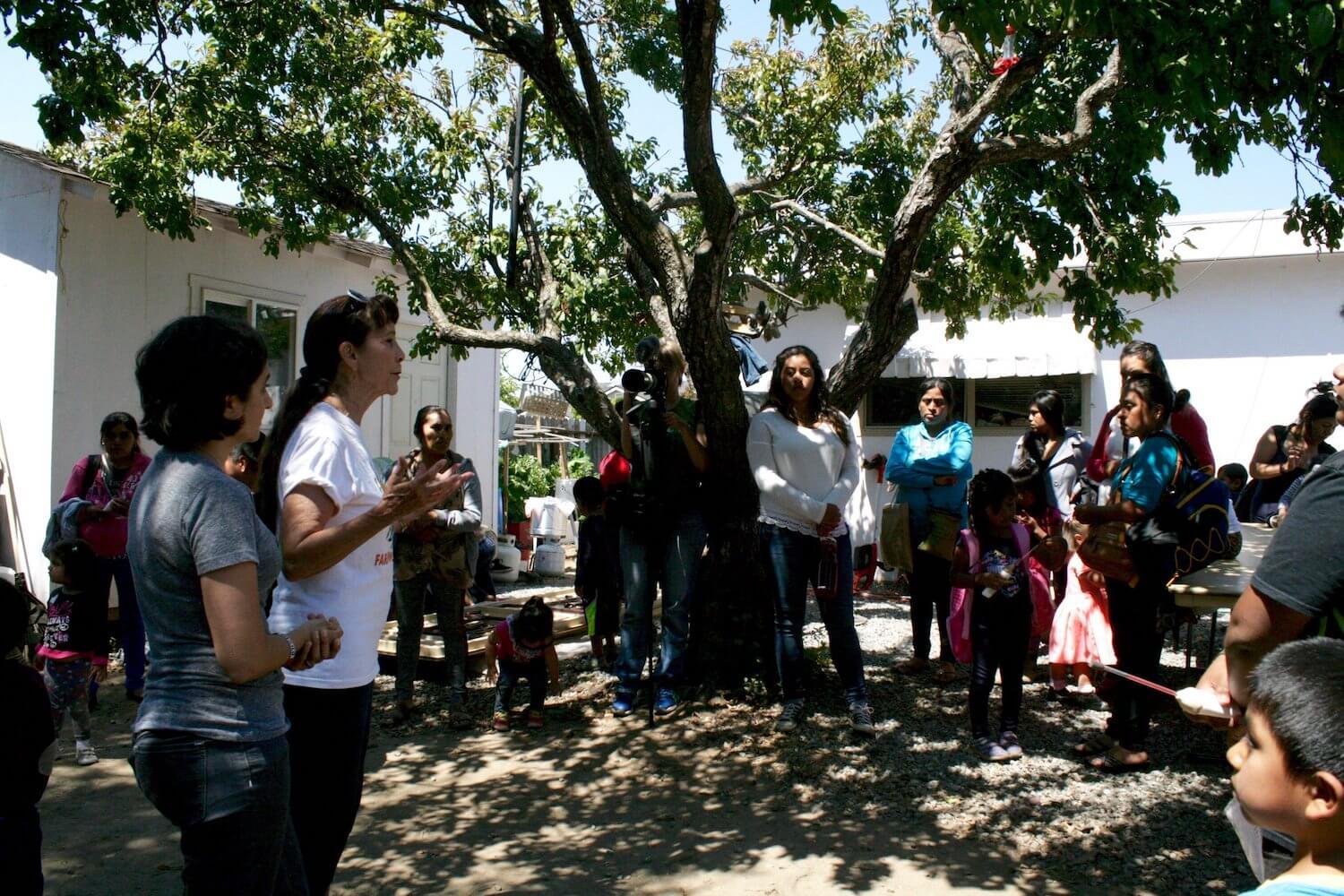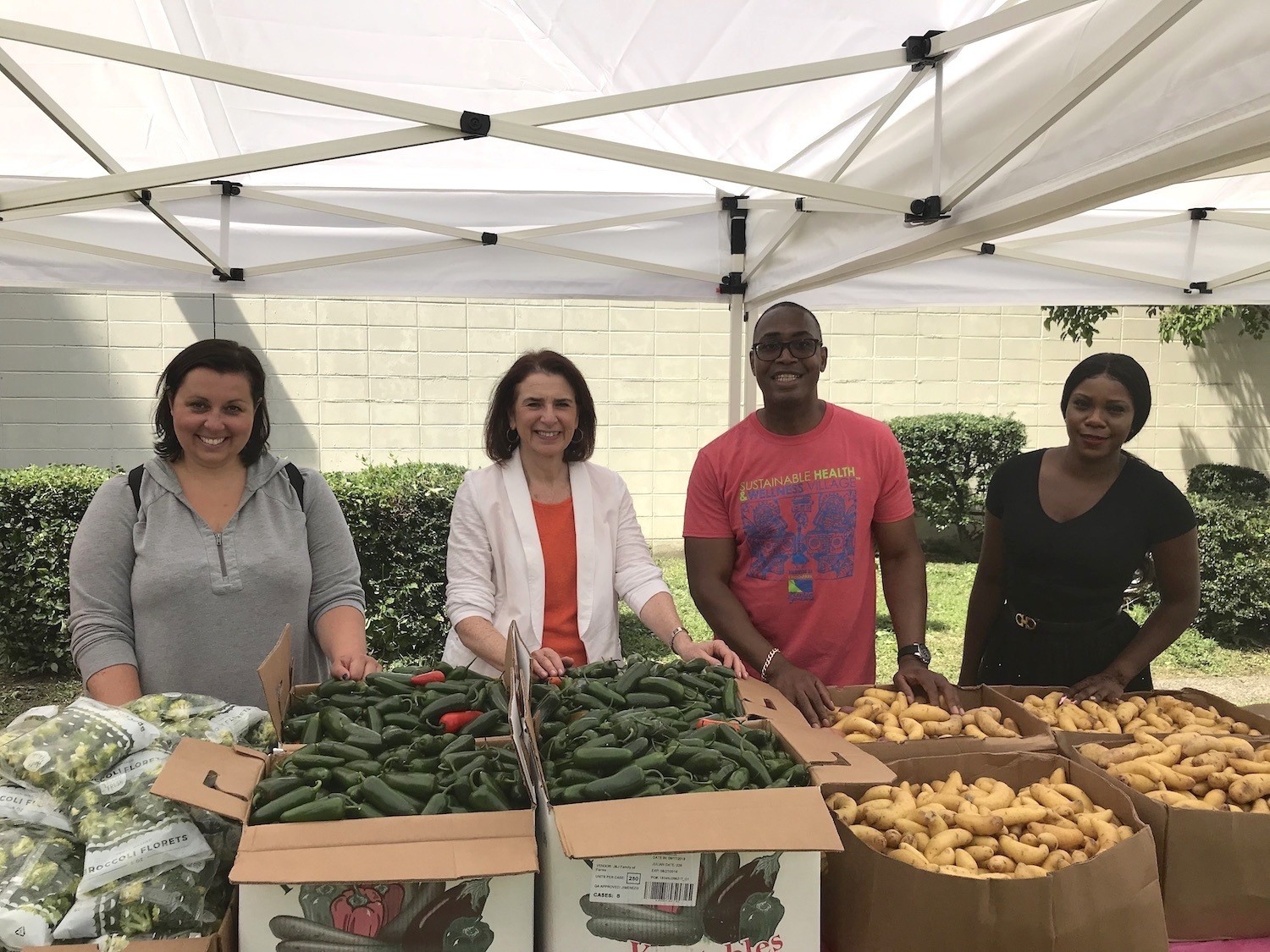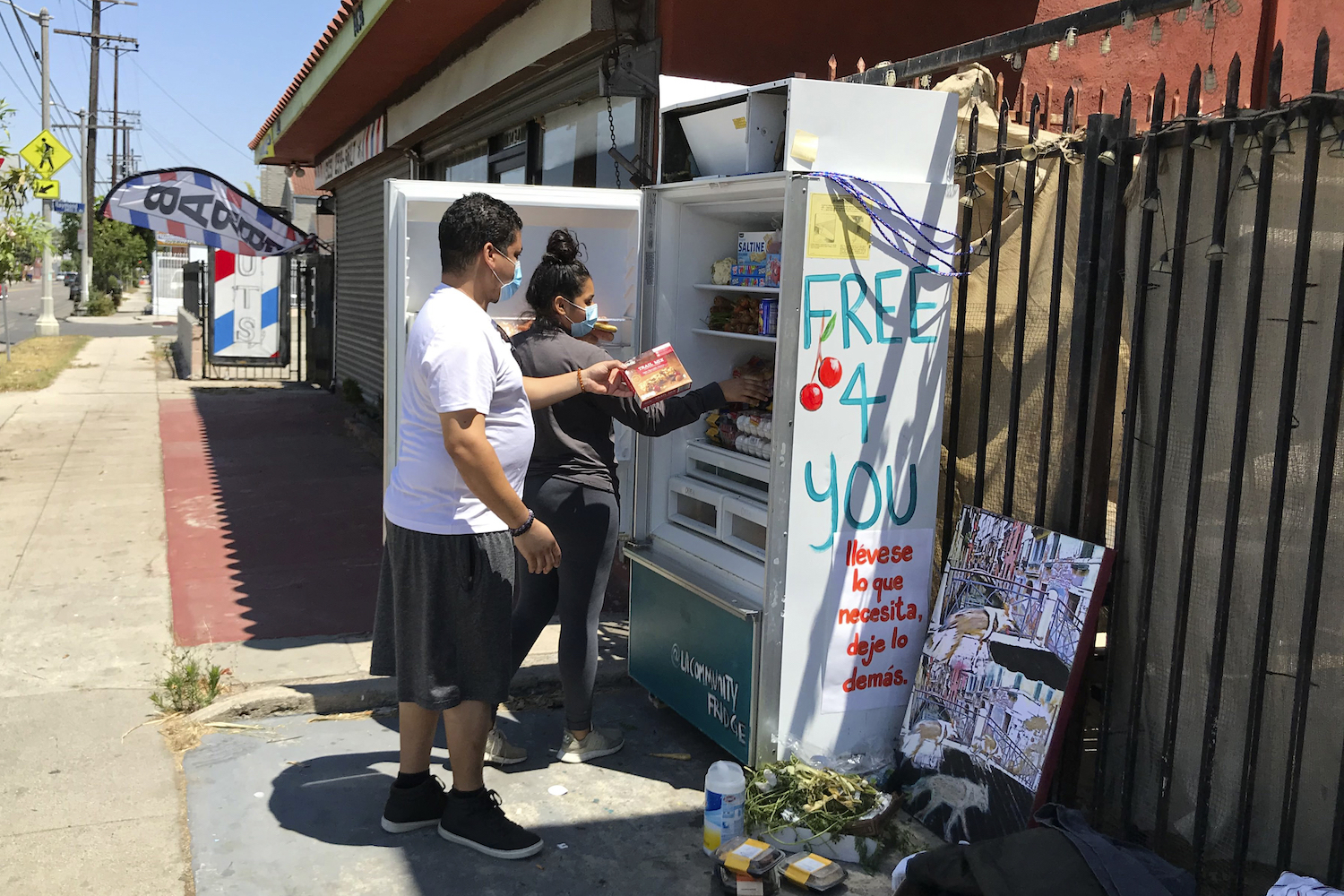
AP Photo/Aron Ranen
Free-fridge projects that encourage neighbors to help each other have met with some opposition. But that hasn’t stopped them from popping up across the country.
Pictured above: Volunteers Bryant Rodriguez and his daughter Vanessa Rodriguez stock a refrigerator with free food for people in need in Los Angeles on July 20, 2020. A network called LA Community Fridge has placed a number of them across the Los Angeles area with plans to install more.
Sherina Jones, an aesthetician who lives in Miami, Florida, was watching make-up videos on YouTube when the algorithm suggested something a little different: a video about community fridges, a kind of mutual aid in which food donations are placed in a shared refrigerator on the street. People take what they need, and individuals or groups and businesses with excess food can give back to the community.
“I watched the video and it basically explained what a community refrigerator was and what it was for, and I was like, that’s something we could really use, especially at this time with so many people hurting,” Jones said in a phone call with The Counter.
The coronavirus pandemic has made millions more Americans food-insecure. In August, about one in 10 Americans reported that they sometimes or often didn’t have enough to eat that week. That’s about 22.3 million hungry people, 4.3 million more than there were in March.
Where government assistance falls short as a system, mutual-aid projects can fill in gaps. In theory, mutual aid is part community organizing, part political participation—specifically, it encourages people to take responsibility for each other when political and economic conditions are changing. In function, mutual aid-projects promote a voluntary exchange of essential goods and services at the community level. The practice has roots in anarchist organizing, but has seen more mainstream acceptance this year.
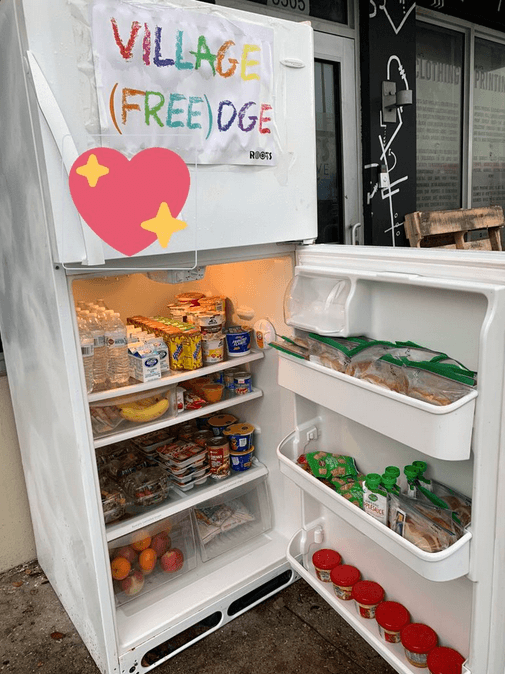
Courtesy Sherina Jones
A Village (Free)dge outside Roots Black House in Liberty City, Miami, Florida.
Jones reached out to her cousin Isaiah Thomas and his business partner Danny Agnew, who are part of a collective that promotes the economic growth, social awareness, and self-sufficiency in Black and non-Black communities of color. They agreed to host the fridge outside of their event space, Roots Black House in Liberty City, Miami, and helped raise money for groceries. Jones bought a used refrigerator from a repair shop for $180, and put up signs explaining how the fridge, which they branded a community “(Free)dge,” works. Jones has since set up three more community refrigerators in different parts of Miami.
But now she’s down to just three in total, after the one she set up in Overtown Village was stolen. (Jones tweeted about the loss in September). Jones bought a replacement, but was forced to remove it when the owners of the convenience store down the street complained.
And this is hardly the first time that free fridges have been stolen or vandalized.
Kelsey Bryden wanted to set up a fridge near where she lives in Brooklyn, New York. “I felt really drawn to it because it sounded like something I could do on my own,” she told The Counter. Bryden found a nearby bodega that was receptive to having the fridge outside, spotted a fridge on Craigslist, and connected with someone in the Bedford-Stuyvesant neighborhood mutual-aid group, which communicates via the messaging app Slack, who could help move it into place. She even had an artist interested in painting the fridge.
Mutual aid is part community organizing, part political participation. It encourages people to take responsibility for each other when political and economic conditions are changing.
But the fridge was stolen before they got a chance to start.
Security footage Bryden got from the bodega owner showed someone arriving outside with gloves and a hand truck. The owner told Bryden that their landlord didn’t want the fridge outside after all, because they thought it would attract poor people to the front of the store. Now, Bryden thinks the landlord may have hired someone to get rid of the refrigerator.
[Subscribe to our 2x-weekly newsletter and never miss a story.]
Thadeaus Umpster helped set up a free fridge in Brooklyn back in February, and is part of a group chat with people who have set up community fridges across the country. He said he knows of at least eight incidents in the New York metropolitan area where community fridges have been stolen, vandalized, or had to be moved because of pushback by landlords or surrounding residential communities.
A community fridge set up in Union City, New Jersey, was knocked over and broken. In the Rockaways neighborhood in Queens, New York, a free fridge was stolen and stranded on a beach jetty. Afterward, the theft was celebrated in a Rockaway Beach Facebook group as “Legendary,” leading community organizers to believe it was motivated by racism and classism.
“This is what white supremacy looks like,” a member of the grassroots activist group Rockaway Revolution tweeted in response to the loss.
“I think it’s definitely classism, and when you think about poor people in the Rockaways, a majority are Black and brown folks,” Rockaway Revolution organizer Marva Kerwin told local publication, The Queens Eagle. “There is segregation here.”
Opposition has perhaps been the most pronounced in more gentrified neighborhoods.
“A vegan cafe [in Clinton Hill] set up a fridge, it was fine for a day or two, then the landlord got back from the Hamptons or whatever and said no,” Umpster said.
Of course, it’s certainly possible that not every theft is the result of NIMBYism or vitriol against the poor and in-need. In some situations, it may be a case of mistaken-fridge identity.
“A vegan cafe set up a fridge, it was fine for a day or two, then the landlord got back from the Hamptons or whatever and said no.”
Mariya Chechina had an extra refrigerator just sitting in her garage in Jersey City, New Jersey. One of her friends, who runs a community fridge in the West Side neighborhood, urged her to place one where Chechina lives, in the Greenville neighborhood. Within a week it had been taken.
In major cities, it’s not uncommon to see old appliances left out on the sidewalk for trash pickup. There was a recent near-miss when the driver of a municipal waste truck almost carted away the replacement for Chechina’s stolen fridge, but her neighbor ran out and told them it was being used.
“I’m kind of hoping it was a mistake,” Chechina told The Counter, about the initial theft. “Otherwise it’d be really sad.”
But she thinks the experience has been positive overall. “Even neighbors come and drop off food,” Chechina said. “It’s really a community effort, not just us.”
Dan Zauderer, a teacher in the South Bronx, helped set up a community fridge in his neighborhood in Mott Haven in September. He told The Counter that some of his neighbors thought the fridge would be stolen, but he was reluctant to chain it up because he felt it might send the wrong message—one of distrust.
But one day, Zauderer said, he went to check in on the fridge, and someone had brought a chain and figured out how to secure it to a wall. Eventually, Zauderer heard that a fellow community member had decided it was important and solved the problem of the chain himself. That’s how mutual aid works: the community decides what its priorities are, and solves problems informally, through informal communication.
In spite of theft and vandalism, the gospel of community fridges appears to spread even faster than ill will: There are now more than 60 free fridges in the New York metropolitan area, according to Umpster. And Jones, the aesthetician from Florida, said that a woman in Tallahassee reached out her to say that the ones Jones had set up in Miami inspired her to set one up in her own community.
“It’s definitely filling a void,” Jones said. “We hear different stories: in between jobs, lost jobs, children are home eating more than ever.”
She added, “Some people are kind of ashamed to come, but I always welcome them with open arms.”

